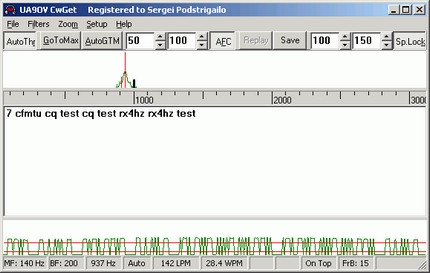

Image by author - Python output of dictionary containing the Morse Code Representation Building the Morse Code Decoder # Define an empty dictionary 'morse_dict' morse_dict = # Convert the 2 lists into a dictionary using a tuple zipped_char_code = zip(character, code) morse_dict = dict(zipped_char_code) # Print the dictionary 'morse_dict' on the terminal line by line for key, value in morse_ems(): print(key, value) You can refer to my previous post on building a dictionary data structure in Python here. The way the Morse Decoder will be built is that we will prompt the user to key in the Morse Code representation (i.e. in 0s and 1s), with each alphabet or number separated by a *. Once the user pressed ‘enter’, the program will decode the Morse Code and displays it in alphanumeric form. I developed my own morse decoder years ago for my Commodore computers.# reverse the previous dict as it's easier to access the keys zipped_code_char = zip(code,character) rev_morse_dict = dict(list(zipped_code_char)) # initiating a while loop while True: # empty list to store original message ori_msg = # empty list to store decoded message dec_msg = # prompt the user to input morse code input_msg = input ("Please enter any Morse Code sequence for decoding. It successfully translated beeps into English text onscreen. The job is easier with a computer of course.
PDOLEW MORSE DECODER SERIES
Otherwise you need to create artificial memory cells and artificial binary words.Įach character (dots and dashes) can be stored as a series of diode-resistor pull up networks. To make a gap apply a pull-down resistor. Apply a network to a shift register (as an alternative, one or two 4017 decade counters).

The output is a series of dots and dashes. The switching becomes complex, but it's one way to pursue proof of concept.Ĭreate an electronic branching structure based on whether a dot or a dash is encountered at each step. (There are at most 5 steps or levels, assuming you make do with 32 characters.) Follow the left path when a beep is a dot (less than, say 12 milliSecond). Follow the right when a beep is a dash (greater than 12 mSec).Įnd a character when the gap is 25 mSec. (I pressed my keyboard keys to increase or decrease timeframes.)Įxample, if the first beep is a dot followed by a gap, you have letter E. Where the last choice stops is the result of the unique series of dots and dashes for that letter. To display each letter is the second challenge.

The obvious way is to light an led behind a translucent panel with the letter painted on it. The letter appears only momentarily as the next letter comes in with little pause. Or, create a binary lookup array (in the form of electronic memory cells, or diode-resistor pullup pairs). This may be used for 7-segment display (maybe scrolling, maybe stationary). Or to translate to ascii in case you want to send to a computer. If you wanted to try BradtheRads approach, this can be done with a single chip.Īll but R's and LEDs and Switch are onchip. Note most of chip resources unused in this design, see right hand window used/available Board has programming interface on it (USB to PC).īasically you drag and drop chip resources out of its catalog, wire up with a wizard, Only code needed is chip startup code, and that isĪuto generated for you. Or change # stages, those changes are all trivial.Ĭhip has ARM processor, so if you want to use more of its resources and create moreĬomplex designs thats "normal" embedded work that is done with its IDE (PSOC Creator).īasically think of chip as a box of diverse parts, both analog (A/D, OpAmp, Comparator, PGA, DAC.)Īnd digital (from simple gates to LUT, PWM, Timers, DDS, Quaddecoders.), and a tool that allows you Onchip debouncer used to condition the switch.


 0 kommentar(er)
0 kommentar(er)
